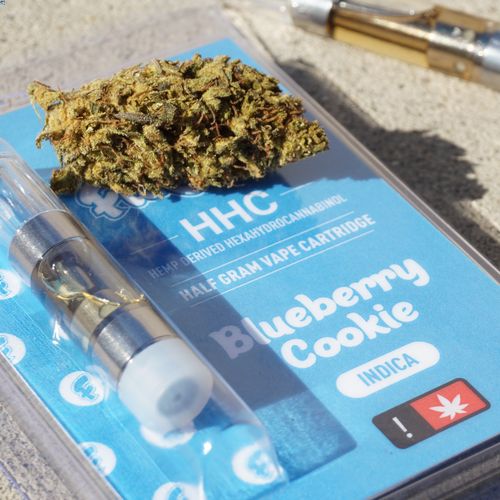Synthetic cannabinoids are chemicals that work in a very similar way to Δ9-tetrahydrocannabinol (THC), the active part of cannabis. They were first researched by John William Huffman, a professor of organic chemistry at Clemson University. In 1985, his students carried out tests on laboratory mice of the first synthetic cannabinoid, JWH-018.
Originally designed as a product to help pain relief, the desired therapeutic properties proved difficult to separate from the undesired psychoactive effects.
Synthetic Cannabinoids in Smoking Mixtures
First reports of synthetic cannabinoids being detected in herbal smoking mixtures began to appear in 2008.
Typically, these substances in their pure state are either solids or oils. When packaged as smoking mixtures they are usually sold in metal-foil pouches, normally containing 3g of dried leaves, onto which a solution of one or more synthetic cannabinoids has been sprayed.
Smoking mixtures of this sort do not contain cannabis or tobacco, yet the effects they produce for users are very similar to those of cannabis. As well as feeling happy and relaxed, some users may also feel giggly or talkative. Hunger pangs (“the munchies”) are also common. Less pleasant effects can include paranoia and feeling ill.
Under What Names Are Synthetic Cannabinoids Sold?
Synthetic cannabinoids are marketed under a variety of names. These include: Spice, K-2, Happy Tiger Spice, Yucatan Fire, Bliss, Blaze, black Mamba, Tai High, and JWH-018, -073 (and other numerical suffixes), after the original researcher’s initials.
What Are the Risks of Synthetic Cannabinoids?
The effects of synthetic cannabinoids mimic those of cannabis, However this is where the similarity between the two substances ends. A large number of symptoms caused by use of synthetic cannabinoids have been reported, including paranoia, agitation, hallucination, vomiting, chest pain, stroke, kidney damage, brain damage, and death.
For many observers, the comparison between synthetic cannabinoids and cannabis is a dangerously misleading one. Many argue that the two substances are not comparable. Synthetic cannabinoids are much more efficient at binding and acting in the brain than cannabis. Also the chemicals can be a lot more potent than cannabis – with some suggesting strength levels that are sometimes up to one hundred or more times greater than THC.
Additionally, the lack of regulation and oversight in the production and sale of synthetic cannabinoids makes it difficult to determine exactly what chemicals are being used. This means that users may be exposing themselves to unknown and potentially harmful substances. Synthetic cannabinoids are often marketed as a legal alternative to cannabis, but the reality is that they can be much more dangerous, with a higher risk of addiction and overdose.
The long-term effects of synthetic cannabinoid use are not yet fully understood, but research suggests that it may have a negative impact on brain development in young people. Regular use may also lead to addiction and withdrawal symptoms upon cessation.
In summary, the risks of synthetic cannabinoids far outweigh any perceived benefits. With a lack of regulation and potentially harmful chemicals, users are putting themselves at risk of serious physical and psychological harm. It is important to educate the public on the dangers of synthetic cannabinoids and to continue research into their effects and potential treatments for addiction and overdose.
Are Synthetic Cannabinoids Legal to Use?
Smoking mixtures that contain synthetic cannabinoids are illegal to have, give away or sell in the UK. They are Class B drugs. Get caught in possession of synthetic cannabinoid products and you may face up to five years in jail and/or an unlimited fine. Supplying the chemicals to others risks an unlimited fine and up to fourteen years in prison.
Photo by Elsa Olofsson on Unsplash
Zoom Testing is a leading UK drug testing company and a supplier of Drug Test Kits.
This post was originally published in January 2015. It was last updated in June 2023.





